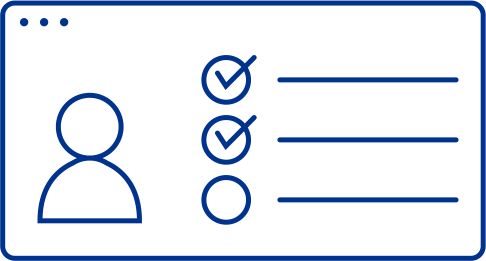With the introduction of global minimum taxation, companies are facing numerous challenges. In order to fulfil the resulting tax payment and declaration obligations, they must introduce a completely new tax calculation. Complying with Pillar 2 requirements is highly complex and requires constant monitoring and review of the company's tax position.
Our innovative, cloud-based solution KPMG BEPS 2.0 Automation Technology (KBAT) supports you in this process.
Claus Jochimsen-von Gfug
Partner, International Transaction Tax
KPMG AG Wirtschaftsprüfungsgesellschaft
Pillar 2 calculation tool: Automated tax calculation with KBAT
KBAT categorises your business units according to Pillar 2 types and calculates the minimum tax based on your income, taxes and effective tax rate. The comparison is made with the minimum tax rate - both for the ultimate parent company and for the national companies.
KBAT also makes it easier to manage your tax data. The solution uses both ERP and non-ERP systems as a data basis and offers centralised dashboard navigation. Results can be exported as Excel files and reports can be printed out as required. As soon as the Organisation for Economic Co-operation and Development (OECD) publishes the XML file schema for the electronic transmission of the minimum tax report, this will also be integrated into KBAT.
If you outsource tasks to external service providers as part of a managed service approach, KBAT can also be provided for these process steps.
Global minimum tax software: KBAT and Digital Gateway
KBAT can be used via our innovative Digital Gateway platform. Digital Gateway gives you access to all the tax and legal technology solutions you use. You can find more information here.
Pillar 2 technology solution: The functions of KBAT
- Management of the relevant entities: Manage entity data including shareholders, automatic GloBE classification and visualisation in an organisational chart
- Flexible Pillar 2 data input: upload Excel templates or direct data extraction from ERP and non-ERP systems
- Pillar 2 data queries: Supplement data queries using user-specific questionnaires
- Granularity of data collection: Detailed customisation and structuring of data
- Safe harbour calculation: Inclusion of the limited data set for safe harbour analyses and reporting
- Pillar 2 calculation of GloBE income and recorded taxes: Complete calculation according to Pillar 2 criteria
- Pillar 2 scenario calculations: Creation of one-year, five-year and permanent options with different scenarios
- Role-based access: Control of user rights for clear segregation of duties
- Detailed calculation results and audit trail function: Excel-based reports for tracking all calculations
- Full coverage of national supplementary tax (QDMTT): Standardised calculation with localisation options
- Pillar 2 visualisations and analyses: Powerful dashboards and analysis modules
- GloBE Information Return: Create the GIR as PDF or XML for submission to the tax authorities.
Pillar 2 solution: Successful implementation with KBAT
A solid data model is required to optimise the use of KBAT. Important aspects here are
- the identification of relevant Pillar 2 data,
- the structuring and mapping of the control data,
- automated or manual data queries,
- ensuring data quality and
- adaptability to changing OECD requirements.
To ensure these aspects, our digital gateway platform offers additional functions - such as legal entity management, with which you can easily record ongoing group changes and assess their relevance for Pillar 2.
Interested? Get in touch with us.




